Selected by a community panel, artists Richard O'Connor and Sasha Hercik have worked with our team for months to bring a collection of stories to life by 1) Anuhea Yagi & Hōaka Delos Reyes; 2) Nanifay Paglinawan & Pualani Enos; 3) Kevin & Kukui Gavagan; 4) Hōkūlani Holt & Cody Pueo Pata; 5) Annadele Yahiro & Mick Bursack; 6) Andrew Chin & Michael Takemoto; 7) Kevin Brown & Anthony Pfluke.
The event will be emceed by Sissy Lake-Farm of Hale Hōʻikeʻike, beginning promptly at 3 PM. Free to the public, audience members will experience the premiere of 7 individual animated talk-story excerpts, each between 3 to 5 minutes in length, as well as an offering by Maui Public Art Youth Task Force Lead Kekaulaiwi Farm. Audience members and story participants will be invited to share their reflections for a Q&A to conclude the event. MORE
0 Comments
On Saturday, April 27, 2024, we will host our third Hui Mo‘olelo Film Festival from 3-5 PM at ProArts Playhouse in Kihei. Resulting from of our most recent call to artists, a new collection of animated film shorts drawn from intergenerational talk-story audio recordings will be unveiled that celebrate Maui history, culture and sense of place. The recordings stem from our Hui Mo'olelo program partnership with the County of Maui and Hale Hōʻikeʻike at the Bailey House / Maui Historical Society. Led by kumu Leilehua Yuen, a cohort of 21 storytellers were trained and paired with intergenerational partners to audio-record memories rooted in special places throughout Maui County. Each year, we release a new collection of recordings as part of our RFP (request for proposals) process wherein professional artists from across the globe submit proposals to interpret a story as a work of public art. Selected by a community panel this winter, Sasha Hercik (Kihei, HI) has worked with our team for months to bring the story of Anuhea Yagi and Hōaka Delos Reyes to life. Enjoy Sasha's Q&A below to get to know the artist, learn more about her process, and get excited for the April 27 event! What was it about the talk-story between Anuhea and Uncle Hōaka that sparked the inspiration to interpret it as a work of public art?
Listening to all the excerpts, initially I had a few different criteria that I was trying to fulfill to create a strong art piece that was also appealing to watch as a video: visual representation, solid storytelling, and emotional/personal impact. While all the talk-stories were unique and interesting on their own, I didn't quite feel the "emotional/personal impact" until I heard the excerpt from Anu & Uncle Hoaka. I remember listening to it and within the first 15 seconds I had my "oh, wow" moment that just sort of made it impossible NOT to choose it. What lessons did you take away from your consultation with Anuhea? I remember going into the meeting with Anuhea unsure of what to expect, and by the time the call ended there were just feelings of warmth, emotion and connection. Anuhea is a lovely, knowledgeable, passionate, deeply rooted person who gave me tons of visual inspiration for my art piece just by talking about her own experiences with Hawai'i, the Hawaiian culture, spirituality and physical places. Certain imagery she shared ended up totally changing the trajectory of my initial storyboards and I'm so grateful I had the chance to pick her brain. What lessons did you take away from your consultation with Uncle Hōaka and his nephew Nalu? This consultation I remember feeling intimidated going into because Uncle Hoaka is such a renowned professional in his field, yet his sense of humor and sly wit quickly made everyone comfortable and he filled the time we had with the most incredible, outlandish stories of growing up in Hawai'i. There were these instances where he would defer to his nephew Nalu for the right Hawaiian word/phrase/pronunciation because Nalu is a fluent practitioner of Olelo Hawaii and it was this really cool moment where we got to see the future of Hawaiian culture being taught back to the older generation, which feels almost synonymous to what this project is as well. Needless to say, Uncle Hoaka was a deep well of knowledge and I learned so much just by listening. How has your approach to art evolved as a result of this project? This project has been a unique experience to make an animation by listening to a story and creating a short film based really from feel alone. Typically when making a film, you tend to have a type of structure or linear story to follow, with characters or a setting, etc. but this approach relies on a sense of intuition and visual representation; anyone listening to this talk-story might have their own version of what they picture in their heads, whether that's colors, landscapes, the people themselves talking, and so to use my own interpretation to bring this story to life in a way that would make anyone watching understand it's power and emotional impact feels very special and unique. It makes me excited for future projects and has really expanded my way of thinking about film/animation in general. What has the experience of working with MPAC been like for you? I've mentioned this a few times during our calls, but I remember the last Small Town Big Art project I saw and thought to myself, "The next open call they have, I don't care what it is, I'm applying," because even though I've lived here almost my whole life, I had only just caught a glimpse of our growing local art scene recently and knew that I wanted to be a part of it. My experiences with Kelly, Sissy and Ann-Marie have been warm and professional, they're an incredible team striving to keep the arts prevalent on Maui and to translate our island's stories into public art pieces for everyone to love and enjoy. I've been so grateful to work with MPAC on this project as a way to finally get integrated into the Maui art scene and also to help promote our beautiful culture through animation. What do you hope audience members will feel or understand after viewing your artwork? There are a few things I hope are conveyed through this project: 1) Animation is a versatile, incredible medium that can showcase, express and promote the Hawaiian culture just as powerfully as any traditional medium 2) I hope this piece makes everyone watching it feel that same "oh, wow" goosebump, heavy powerful moment I felt when I first listened to this excerpt 3) I want Anuhea and Uncle Hoaka to feel their voices represented, and for this short film to help bridge the gap between their story and those who might not have understood their message without the visual element. What advice do you have for others interested in working with MPAC? JUST APPLY!!! Haha, I know the application process might be intimidating and you might not get approved on your first try, but just keep applying! MPAC is so helpful with their guidance, their empathy, and ability to work with you no matter where you're at on your creative journey, so do the big scary thing and just go for it! Follow their socials (and affiliate socials!) so you can stay on top of when the open calls are and jump in with both feet :) Any closing thoughts? Thank you again to MPAC for giving me this opportunity to finally connect with the Maui art scene, to get to make a piece of public art for the Maui community, and for such an amazing experience thus far. Being able to talk to people like Anu and Uncle Hoaka and Nalu and Aunty Sissy has been a privilege, and to have the ability to use my art to give back to my community that has cared for and guided me for nearly my entire life is something I will always be grateful for. Maui Public Art Corps, in partnership with the County of Maui and Hale Hō‘ike‘ike at the Bailey House/ Maui Historical Society, is pleased to announce a new public art project in development for the town of Makawao.
The result of a collaborative call-for-artist-proposals that challenged candidates to interpret stories from its Hui Mo‘olelo program as works of visual, performance or experiential public art, sculptor Matthias Neumann has been selected to create a piece fronting the Makawao Public Library, which will be unveiled on April 20, 2024. Selected by a community panel with criteria focused on community engagement, exceptional artistic quality, and relevance to the artist's chosen Hui Mo‘olelo recording, Neumann's project is inspired by a story shared by Kim Thayer of Mauna Kahālāwai Watershed Partnership and Scott Fisher, Director of ʻĀina Stewardship at Hawai'i Land Trust. In 2021, Kim Thayer participated in the collective’s Hui Mo‘olelo program; a 3-part sense-of-place-focused storytelling workshop led by Leilehua Yuen of Hilo, HI during the SMALL TOWN * BIG ART pilot for Wailuku. In 2023, Kim applied what was learned to capture an audio recorded story with Scott Fisher, who shares, "I was born when my parents were living at Sunny Side plantation camp, which is in the area of Makawao-Haliʻimaile. I grew up playing soccer at Eddie Tam field, and spending a lot of time there-especially when going to school at Seabury. My brotherʻs first job was at Makawao Steak House. When I moved home in 2003 we were living in Makawao Ranch Acres, and my daughter was born in that house – a true kamaʻāina of Makawao. Perhaps what I have always appreciated most about Makawao is that it is the ʻgate of the forestʻ (lit. forest beginning), so it is a transition between the wao kanaka and the wao akua.” Thayer shares, ”I have similar connections to Makawao. My first babysitter was in Haliʻimaile, and I also spent time with my godparents, Joyce and Skippy Perreira, whose house is on Kaupakalua, near the Kokomo junction. I, too, played soccer at Eddie Tam and spent all of my formative years at Seabury from 6th grade on up. My brother picked up Komoda butter rolls practically every day (except Wednesdays) throughout his high school career, and (my husband) and I got our chocolate Chantilly wedding cake from them. My grandpa was a devoted member of the Makawao Hongwanji. All generations of his side of our family are housed in the Nokutsudo (columbarium) there, from my great-great grandparents to my little brother. We've been going to the bon dance there every year forever. Oh, and just remembered, I took my driving test at the Makawao DMV!" The artist’s proposal included a mockup of a woven 11-foot by 8-foot sculpture, its pattern designed as an expression of the interconnectedness exhibited in the relationship between Thayer and Fisher that unfolded throughout the 80-minute Hui Mo‘olelo recording. Receiving top scores from panelists, Maui Public Art Corps approached the Makawao Public Library as the ideal place for the work – amidst the site’s striking jacaranda trees. Branch Manager Dakota Cotton was thrilled by the idea, as the installation also aligns with the library’s 55th anniversary. “I see this art installation in coordination with our 55th anniversary as a great opportunity to highlight how integral the Makawao Library is to the Maui community and that our local Maui staff is very dedicated to serving local people as best they can,” shares Cotton, “We are grateful to host this new work, which will reflect back some of the beauty of the people and place which make our community so unique. We hope to continue to be a gathering place for learning and creativity for many years to come.” To track the progress of this public artwork and to learn how to get involved, visit mauipublicart.org/makawao. Maui Public Art Corps is currently seeking local businesses to host “Little Free Art Galleries” at their sites where Makawao artists and visitors can “give a local artwork, take a local artwork”, and two community events are currently being planned: An artist meet & greet at Hui No‘eau at 5:30 PM on April 19 and a public unveiling and panel discussion featuring the artist and storytellers Kim Thayer and Scott Fisher at the Makawao Public Library at 10:30 AM on April 20. Please save the dates! Hui Mo‘olelo is a collaborative program of Maui Public Art Corps, Hale Hōʻikeʻike at the Bailey House/ Maui Historical Society and the County of Maui that cultivates stories celebrating the history, culture and sense of place of unique sites throughout the County of Maui. Its goals are to A) capture an authentic moment of connection through intergenerational stories; B) connect residents & visitors more deeply with accurate accounts of Maui history and culture; and C) help ensure that local narratives and cultural heritage are recorded and passed down to future generations, fostering a sense of identity and belonging. At each stage of the Hui Mo‘olelo process, the stories take on a new shape; offering various points of connection for community members to engage: That process begins with a 3-part storytelling workshop (either in-person or virtual) to sequentially lead participants through the purposes of storytelling, the value of the search for knowledge, and encoding that knowledge in moʻolelo. This workshop is the brain child of artist Leilehua Yuen, kumu hula with Hālau Hula LeiManu in Hilo. Leilehua submitted a proposal in response to a 2019 call for public art projects that deeply involved community members in celebrating Wailuku, Maui sense of place. With the intention of in-person "Edutainment" performances for and with Wailuku community members, the project pivoted to a virtual and in-person hybrid offering of workshops due to the COVID-pandemic. Through additional training with StoryCorps DIY and a wide range of storytelling and oral history consultations, our team further developed the Hui Mo‘olelo process. Leilehua's 3-part storytelling workshop has now enjoyed 2021, 2022 and 2023 cohorts, and has been a transformational force in our work. As part of the workshop, participants create a short, self-filmed story submission rooted in a special Maui place. These stories are shared with kūpuna (honored elders) selected by cultural advisor Sissy Lake-Farm (kumu hula, Hālau Makana Aloha O Ka Lauaʻe and executive director, Hale Hōʻikeʻike at the Bailey House/ Maui Historical Society); each of which choose one storyteller with whom to participate in a 40-minute audio-recorded conversation. Pairings are given one directive for their recording session: to capture an authentic moment of connection through stories that are embedded in a Maui sense of place. With the permission of each pairing, audio-recorded stories are shared at mauipublicart.org/hui-moolelo for public access, the Maui Historical Society archives for future place-based research, and at the American Folklife Center at the Library of Congress in Washington D.C as part of our participation with StoryCorps. From here, Maui Public Art Corps distributes a call for artist proposals to interpret these stories as a public artwork in a discipline of the artist's choosing (e.g. song, dance, animation, mural, theatrical performance, etc). Artists are selected by a community panel with criteria aimed at quality, style, experience in creating communal or public art, significance to place and a proven track record of successful collaboration work. To ensure that each resulting artwork is representative of the people, place and story of its assigned install/ performance site, artists each work with community consultants that review their initial public art proposal and add context. Additionally, each work is tied to a unique proverb from Mary Kawena Pukui’s ‘Ōlelo No‘eau: Hawaiian Proverbs and Poetical Sayings to ground the work in its assigned place. Through many hands and many voices, the resulting artworks maximize the public’s opportunity to experience, learn and celebrate art of the highest caliber; connect us more deeply to Maui history and culture; and enrich our island home. For examples of story-based public artwork that we have facilitated, click on any bullet point following "story excerpt" anywhere you see them at mauipublicart.org/hui-moolelo. (Here is one wonderful example). To date, we have produced more than 20 Hui Mo‘olelo-inspired public artworks. Following the August 2023 wildfires, several groups and individuals reached out to request the Hui Mo‘olelo workshop and story recording process as a way to process the experience. We crafted a DIY (Do-It-Yourself) tutorial featuring links and excerpts from Leilehua's 3-part workshop series for interested community members. Amongst those that chose to participate in this new way, we were delighted to meet Jennifer Freeland, who asked to interview her father Burt. Burt's grandfather built the Pioneer Inn in 1901 in the Lahaina Historic District. We are honored to share their story HERE. In November 2023, we produced the Arts & Resilience event on the Great Lawn of the University of Hawaiʻi-Maui College Campus. Offering resource tables by the Council for Native Hawaiian Advancement’s Kākoʻo Maui Resource Hub, a pop-in artmaking activity with Hui No'eau Visual Arts Center, shared storytelling on stage, a hands-on mural exercise with UH Faculty Michael Takemoto and Marc Antosch, the event's headline feature was a collaborative performance by Adaptations Dance Theater and musician Stephen Henderson inspired by a Hui Mo‘olelo recording with Aunty Sally Ann Delos Reyes of Lahaina. More than 100 community members participated, many leaving with a complex emotion of refuge, sadness, and hope; in catharsis – an emotional cleansing of the soul. (View 6-min documentary HERE). As or team continues to brainstorm on ways to expand public access to Hui Mo‘olelo -- irregardless of resulting stories becoming the foundation for public artworks, but rather as its own means of preserving local narratives and communal values connected to place -- we recognize a deepening call to Lahaina. Can this process help to identify specific areas for preservation as Lahaina rebuilds? Is a collection of intergenerational Lahaina stories a feasible objective? Who are the knowledge keepers, and who will support the expression of their memories? What we have found for Wailuku, and increasingly for our developing projects with Kahului, Lānaʻi City and Kahoʻolawe, is that this work positions people, places, memories, and history as the drivers, followed by the art (visual, performance, or other) as a catalyst for deeper investigation; working in a cyclical process that emits values and social identity. These offer a sense of place, and help to guide the way we work with each distinct community. During a recent brainstorm session with our new Youth Task Force lead, we drew up a plan to collect Lahaina-based recipes as a potential catalyst for Lahaina-based Hui Mo‘olelo participants.
As we envisioned the epitome of a family recipe -- handwritten on an index card with torn edges and a food stain or ten, our thoughts zipped to the stories that live therein. Where did you cultivate the ingredients? Who taught you to prepare it? On what occasion do you serve it? Whose favorite is it? In the process of creating a public domain resource of Lahaina recipes, we could very well find our next cohort and the kūpuna that need to be asked: what are the people, places and stories that make Lahaina Lahaina? Our intention is to follow the breadcrumbs as they reveal themselves, and to be ready to pivot when a new path is ready. To be continued... Maui Public Art Corps is delighted to announce the installation of a compelling new public art project, "Maui Strong," showcasing the artistic talents of 600 students who dedicated their creative efforts to convey resilience amid the recent Maui wildfires.
In the wake of the challenges posed by the wildfires, Maui Public Art Corps collaborated with students across the region to channel their emotions and reflections into a powerful visual representation of unity and strength. The result is a vibrant collection of drawings that encapsulate the indomitable spirit of the Maui community. The "Maui Strong" project serves as a testament to the resilience of the island's youth and their ability to find hope and inspiration even in challenging times. The artwork, which will be displayed prominently along a 1,000-foot stretch of the Honoapiʻilani Highway in Lahaina, on the mauka side just past Safeway, invites the community to reflect on the shared experiences following the wildfires and celebrate the collective strength that emerged from adversity. "We are immensely proud of our students and their commitment to expressing the spirit of 'Maui Strong' through their art," said Jayme Kahoohalahala of ʻĪao Intermediate School. "This project not only showcases their creativity but also stands as a symbol of solidarity and resilience for the entire community." Yukki Shin of Maui Waena Intermediate School added, “It is powerful for our Maui Waena students to see their voices take wing, spread beyond their campus and experience their art being shared and embraced by the whole island. The students’ driving purpose was to promote a sense of belonging and collaborating among students and staff through artwork as Maui Stays Strong.” "It was really cool to be a part of this project and even cooler to see the colorful artwork pop out amongst the ash and debris behind it," shares Truth Excavation LLC Owner Kimo Clark, who partnered with Maui Public Art Corps to install the artwork in collaboration with West Maui Construction and Goodfellow Bros, "Another symbol of hope of what’s to come." According to Maui Public Art Corps Chair Kelly McHugh-White, the public art project originated with an invitation to partner with Maui Waena Intermediate, as their student activity coordinators collected donations of hundreds of hydro flasks and school supplies for displaced students. Teachers approached McHugh-White to request local artist designed stickers to help personalize these new items. The response by Maui Public Art Corps’ roster of artists was so strong that they received stickers and artwork from 100+ artists globally. With the support of a #MauiStrong grant through the Hawaii Community Foundation, the organization was able to design a hands-on Sticker Buffet activity for interested schools to design their own “Maui Strong” inspired artwork in exchange for artist stickers, offering a creative outlet for students reassigned to new schools while helping them regain a sense of ownership, identity, and normalcy during this challenging time. The resulting "Maui Strong" themed artwork created by participating students was thought-provoking, inspiring, mournful, and empowered. With the help of ʻĀina Archaeology, the County of Maui and Goodfellow Bros., an additional #MauiStrong grant transformed the student designs into a 1,000-foot mesh barrier fence to be installed along a perimeter of the Lahaina burn zone. “We believe this artwork installation will serve as a symbol of resilience, unity, and the promise of a brighter future amidst challenging times while simultaneously safeguarding individuals from the elements and potential hazards of the burn zone,” shares McHugh-White. “Students are actively contributing to their community by creating meaningful artwork that is displayed prominently, fostering a sense of pride and ownership. Further, the barrier fence will become a reminder for visitors of the area to act with respect as our community grieves and heals, further enriching their experience on the island.” To date, students of Lahaina Intermediate School, Baldwin High School, Pōmaikaʻi Elementary School, ʻĪao Intermediate School and Maui Waena have participated. Learn more: mauipublicart.org/mauistrong A visit to the organizational website of Maui Public Art Corps (mauipublicart.org) will tap you into a series of community-based projects connecting people, place and story through the development of exceptional public artworks. Presented as site specific collections, Kaho‘olawe is featured prominently on the home page, which leads to works of original music, contemporary dance, animation and storytelling inspired by the Island Reserve.
Established in 2020, the nonprofit organization was developed from a 2018 County of Maui pilot project initially intended as construction mitigation amidst Wailuku’s recently completed Capital Improvement Projects. The pilot was designed to tell authentic, local stories through murals, pop-up performances, installations and more — each carefully co-developed with community members and rooted in a unique passage from Mary Kawena Pukui’s ‘Ōlelo No‘eau: Hawaiian Proverbs and Poetical Sayings. Entitled SMALL TOWN * BIG ART (named for the Wailuku Town motto: Small Town, Big Heart), the Wailuku-centered initiative remains a collaborative effort of the County of Maui and Hale Hōʻikeʻike at the Bailey House/ Maui Historical Society, which through the inception of Maui Public Art Corps, is now scaling countywide. With the organization founded by former KIRC staff member Kelly McHugh-White, a growing collection of Kaho‘olawe-inspired artworks have been developed that celebrate its distinctive history, culture and sense of place. In 2021, KIRC Ocean Resources Specialist Dean Tokishi participated in Maui Public Art Corps’ 3-part storytelling workshop under artist Leilehua Yuen. Since that time, two animated film shorts have been created by Brooklyn-based artist Richard O’Connor and his team of filmmakers at Ace & Son Moving Picture Co. that feature Dean’s stories; one in which Dean interviews Uncle Skippy Hau (vimeo.com/692057252), a retiree of the State of Hawaii Division of Aquatic Resources, and another with Coach John McCandless (vimeo.com/773898280) of Hawaiian Canoe Club. Dean most recently recorded a talk-story with his fourth grade Kahului Elementary School teacher, Joyce Kawahara, which will become part of Maui Public Art Corps’ upcoming request for artist proposals. Artists from all over the world will be invited to submit proposals that bring these “Hui Mo‘olelo” audio recordings to life as a work of public art following a period of community engagement that actively integrates feedback from additional Kaho‘olawe resources into the design. KIRC Executive Director Mike Nāhoʻopiʻi’s Hui Mo’olelo recording also became an animated film short, which premiered at the ʻĪao Theater film festival in December 2022 and joined a yearlong exhibit at the University of Hawaiʻi Maui College Pā‘ina Market. Entitled “Waves,” (mauipublicart.org/waves) the artwork was rooted in ʻōlelo noʻeau #237: ʻAu i ke kai me he manu ala (Cross the sea as a bird), selected by Russian-Ukranian artist Taisiya Zaretskaya in collaboration with Sissy Lake-Farm of Hale Hōʻikeʻike at the Bailey House/ Maui Historical Society. KIRC Reserve Operations Manager Lopaka White’s Hui Mo‘olelo sessions have featured Kepā Maly of Kumu Pono Associates, Water-woman Aunty Sally Ann Delos Reyes of Lahaina, Kumu Sissy Lake-Farm, and Hawaiian Canoe Club’s Jeanette Nalani Kaauamo of Wailuanui – all available at mauipublicart.org/hui-moolelo. Most recently, Lopaka’s talk-story with Aunty Sally Ann was presented as a work of contemporary dance and original, looped live music during the Arts & Resilience event on the Great Lawn of University of Hawaiʻi-Maui College. Performed by Maui’s Adaptations Dance Theater and Hāna-grown musician Stephen Henderson, music and choreography were inspired by Aunty Sally’s memories of Kaho‘olawe. Within Stephen’s music, you are able to hear her reference a meeting in the ocean to save Kaho‘olawe, with excerpts including “You can’t just bomb an island”, “You going put us in jail!? You going shoot us!?” and “If I going die today, then it’s a good cause.” (Listen at mauipublicart.org/sallyann). Following the event, many audience members took to the microphone to share stories of Kaho‘olawe and resilience. To date, 9 Kaho‘olawe stories have been recorded yielding 4 animated films, 3 pop-up performances, and 1 mural by a total of 18 professional artists. Through its current Hawai‘i Tourism Authority Kūkulu Ola grant, Maui Public Art Corps aims to continue to develop professional artwork in collaboration with community members that celebrates Kaho‘olawe history, culture, and sense of place. Contact [email protected] to get involved. In the world of community engagement and space planning, the debate between traditional Art-in-Public-Places programs and the rising trend of Public Art is gaining momentum. Both approaches seek to infuse creativity into our communal landscapes, but they do so in fundamentally different ways. Since our beginnings, we've closely explored the nuances and key distinctions between these two approaches, shedding light on why Public Art has become a catalyst for more meaningful, sustainable, and community-centric transformations. In essence, Public Art is more about engaging and involving the community, while Art in Public Places is about enhancing public spaces with permanent or semi-permanent art installations. Both are vital components to a thriving arts community. Maui Public Art Corps focuses on participatory, public art that connects people, places and stories through each works' process of development. Here, Maui Public Art Corps featured artist Stephen Henderson sheds more light on his process and collaboration as he meet with one of the storytellers whose words he will be presenting in musical form this Sunday, November 5, 2023: We found his spreadsheet so enlightening, that we created a bit-sized graphic for public consumption (click to be directed to his detailed logic model): After our talk-story above, Stephen followed up with the lyrics to one of the five pieces that he will be sharing at the performance, to which Adaptations Dance Theater will choreograph and perform to simultaneously: Mele ‘o Kanahā E hele kakou i ke kahakai He’e nalu me na manu kokoke Ka nalu nani ‘o Kanahā Ka nalu nani ‘o Kanahā E hele kakou i ke kahakai Kūkulu loko me na i’a kokoke Ka loko i’a ‘o Kanahā Ka loko i’a ‘o Kanahā E hele kakou i ke kahakai Hoe wa’a me na mano kokoke E hoe wa’a ma Kanahā E hoe wa’a ma Kanahā E hele kakou i ke kahakai Kanu i ke kalo me na keiki kokoke Ke keiki kalo ‘o Kanahā Ka lo’i kalo o Kanahā Ha’ina ia mai ana ka puana Mālama ʻāina me na ‘ohana kokoke ‘Ohana ‘aina o Kanahā ‘Ohana ‘aina o Kanahā The artist goes on to share the following: "I first heard the talk story between Aunty Sally Ann Delos Reyes and Lopaka White when I was approached as a candidate to provide a musical narrative to a collaborative public art piece about Aunty Sally Ann and rooted in themes and messages that she inspires us to all live for. I have the honor of listening to her stories, of learning from them and interpreting them into musical form. Sally is a hero, a true water woman, a lifesaver; she is a mother, a grandmother, a sister, and a source of generational mana’o from her makua from her home in Pū‘ukoli‘i on the west side of Maui stretching to the far reaches of Na Moku ‘o Hawaii and the surrounding Pacific Ocean. She’s traveled everywhere, flies planes, dances hula, dives through deep water, swims channels, surfs huge waves, saves islands, knows the resident sharks, protects the coastline, is a legendary canoe paddler and cares deeply for her ‘ohana, her community and her island home. Aunty Sally - your graciousness, great love, humility, goodness, and bravery inspire me in every way. I hope with my heart that this brings you Joy and reflects the Joy you bring others back to you. Hau'oli lā hānau." We hope to see you at this poignant performance this Sunday. Details HERE.
Maui Public Art Corps is proud to announce a unique event dedicated to arts-based storytelling, wildfire resilience resources, and the rich cultural heritage of Maui. This exceptional gathering will take place on November 5th, 2023 from 2-4 PM, and is set to captivate and inspire attendees from across the community.
Held on the Great Lawn of the University of Hawaiʻi-Maui College Campus – in front of the stunning Ka’a’ike Building’s Makahiki mural led by arts professor Michael Takemoto, Maui's Adaptations Dance Theater (ADT) and Hāna-grown musician Stephen Henderson will collaboratively perform live work inspired and composed by a talk-story with water-woman Aunty Sally Ann Delos Reyes of Lahaina. Raised in Pu'ukoli'i, Aunty Sally Ann was interviewed by fellow Hawaiian Canoe Club paddler Lopaka White through the Hui Mo‘olelo program of Maui Public Art Corps, County of Maui and Maui Historical Society. Artists from all over the world submitted proposals to interpret these stories as a work of public art, and a community panel selected this unique team of artists to bring Aunty Sally Ann's words to life. ADT will perform five contemporary dance vignettes, each lasting 3-5 minutes and rooted in ‘Ōlelo No‘eau: He lawaiʻa no ke kai pāpaʻu, he pōkole nō ke aho. He lawaiʻa no ke kai hohonu, he loa ke aho, (a fisherman of the shallow sea uses only a short line; a fisherman of the deep has a long line). Stephen will simultaneously perform a five movement minimalist symphony of live music between 3-5 minutes per movement inspired by Aunty Sally Ann’s connection with kai and selected stories from her connections to wahi pana in central and west Maui. The theme of the symphony is ‘E Ola Ka Wai’ and will reflect the cycle and journey of water from ocean back to ocean, giving voice to its various forms and environments inspired by her resilience and adaptability. “The thing that really hit me so hard is Aunty’s connection to water,” says Henderson, “everything from swimming to canoe paddling to her time going to Kahoʻolawe, meeting in the middle of the ocean, and the whole fight we have now for wai, that’s our life blood just like our keiki are the fruits. I am centering each movement around different parts of the wai.” “It sounds exciting to me!” shares Aunty Sally Ann, “it’s going to be something different; I’ve never seen something like this develop before. As long as it inspires people. You know life is just only once, and one of my goals is to live it to the fullest every day.” Through an additional partnership with the kūpuna of Alu Like's Kumu Kahi Department, whose mission is to enrich and enhance the lives of Native Hawaiian elders by preserving and restoring their health, sense of dignity, self-respect and cultural identity and promote lifelong learning, Henderson and ADT will gain further inspiration during a free interactive workshop on October 30. Artists will share an audio recording from Aunty Sally Ann's story and ask kūpuna to envision her words as music and dance. Through improvised dance, music and storytelling, participants will actively help to shape the performance for the one-time-only November 5 event. Added features of the November 5 Arts & Resilience Event include resource sharing by the Council for Native Hawaiian Advancement’s Kākoʻo Maui Resource Hub, a pop-in artmaking activity with Hui No'eau Visual Arts Center, shared storytelling on stage, a hands-on mural exercise with UH Faculty Michael Takemoto and Marc Antosch, and more. Community organizations that are interested in sharing resources or activities are encouraged to contact [email protected]. “As Maui Historical Society’s Sissy Lake-Farm and I began to brainstorm with UH Maui College on how to approach a convening that celebrates Lahaina stories, we felt it should be a requirement that wildfire recovery resources were made available during the event,” shares Maui Public Art Corps Chair Kelly McHugh-White, “our mission is to connect people, place and story through the development of public art projects, with a focus on process. Each and every partner in this event has aligned so beautifully, and we want to continue that momentum by ensuring access and inclusivity. Aunty Sally Ann is a heroic figure, and this moment will be one way to celebrate her joyful stories of Maui, and especially of Lahaina.” Aunty Sally Ann Delos Reyes will celebrate her 80th Birthday the week of the event. Gather your family and friends, bring your lawn chairs or blankets, and prepare for an afternoon filled with artistic brilliance on the Great Lawn of the Kahului campus. The event is open to all, and we encourage everyone to attend. Event Details: Date: November 5th, 2023 Time: 2-4 PM Free Location: The Great Lawn: University of Hawaiʻi-Maui College Campus (in front of the stunning Makahiki mural which covers the Great Lawn-facing wall of the Ka’a’ike Building) Guests must bring their own lawn chair or blankets* RSVP HERE Partners: Following a successful pilot program entitled SMALL TOWN * BIG ART, Maui Public Art Corps was established in 2020 in order to scale the positive community response and impacts from Wailuku Town to a countywide initiative. Its mission is to connect people, place and story through the development of exceptional public art. Maui Public Art Corps | FB: @mauipublicart | IG: @mauipublicart About Maui Historical Society: As caretakers of the land, artifacts, photographs, and documents entrusted to our care, it is our responsibility to ensure that the cultural roots and history that define our Maui community will continue to be here for future generations. The University of Hawaiʻi Maui College is a public college in Kahului, Hawaiʻi on the island of Maui. One of ten branches of the University of Hawaiʻi system and is accredited by the Western Association of Schools and Colleges, its mission is to inspire students to develop knowledge and skills in pursuit of academic, career, and personal goals in a supportive educational environment that emphasizes community engagement, lifelong learning, sustainable living, Native Hawaiian culture, and global understanding. Stephen Henderson is an independent producer, singer/songwriter, looper pedal artist and multi-instrumentalist whose roots stem from the small town of Hana, Maui, Hawaii. Raised in a musical family, Stephen had his first taste of the music industry touring with The Jets at a young age, while his father managed them in the 90's. His passion for music was fueled when his family moved from Los Angeles to the small town of Hana, Maui where Stephen was inspired by country legend Kris Kristofferson to begin writing his own music at the age of 12. Since then he has written over 200 songs and holds a Bachelors and Masters degree in Music, Science & Technology, emphasizing in Music Cognition and Audio Engineering from Stanford University. He traveled and lived in San Francisco, Los Angeles, Honolulu, Boulder and New Zealand before settling down with his family in Salt Lake City. Incorporated in 2013, Adaptations Dance Theater (ADT) is Maui's contemporary dance company that creates groundbreaking work to spark new energy in the local dance community. By producing original works and creating professional performance opportunities on an annual basis, ADT addresses a specific need to create and sustain a home for professional contemporary dancers on Maui so that they may create, collaborate, and grow in their artistry without having to leave their island home to do so. Simultaneously, ADT fosters a space where the general public can regularly experience this performing art, presented by artists trained locally and abroad. |
AboutConnecting people, place and story through the development of exceptional public art. Archives
April 2024
Categories |

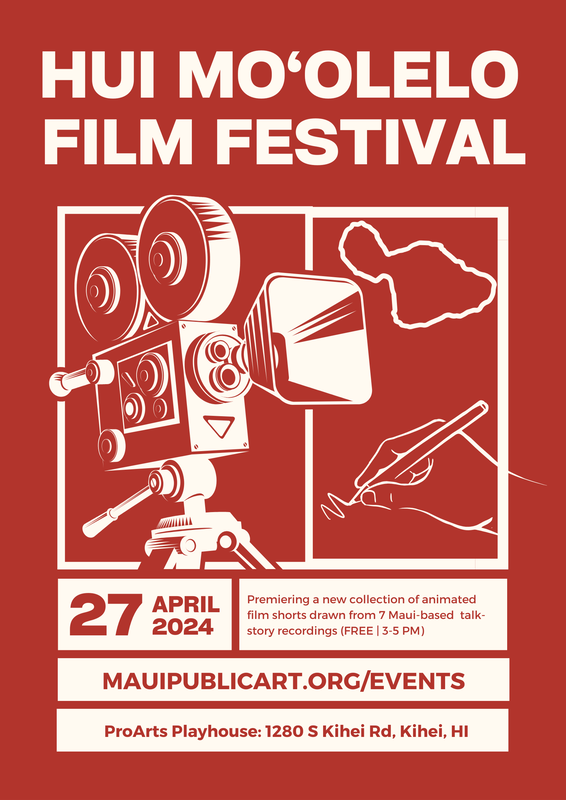

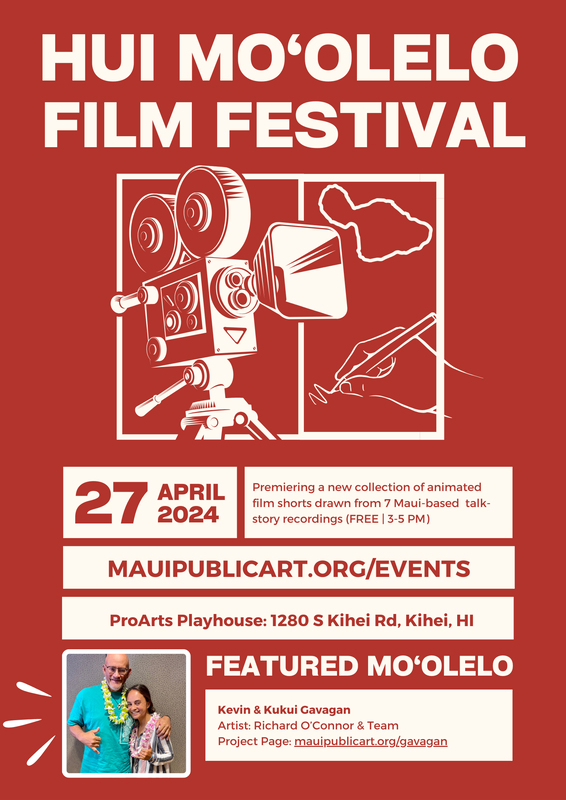


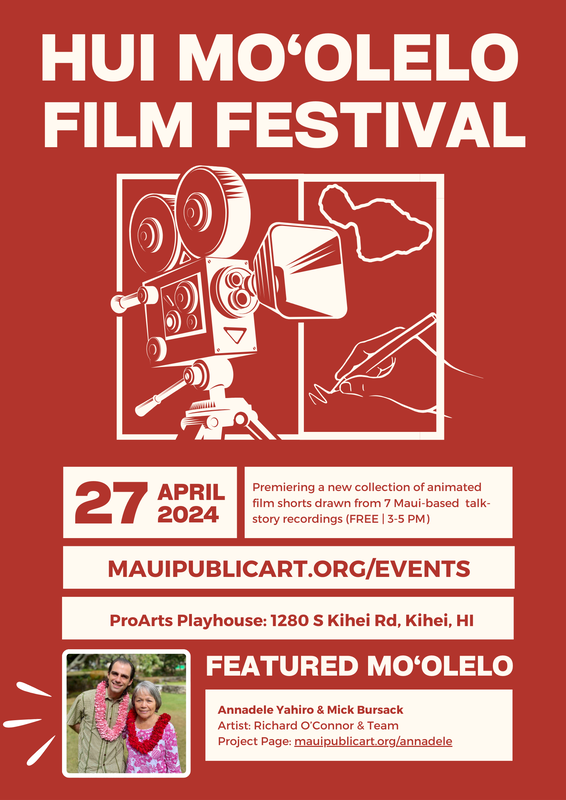
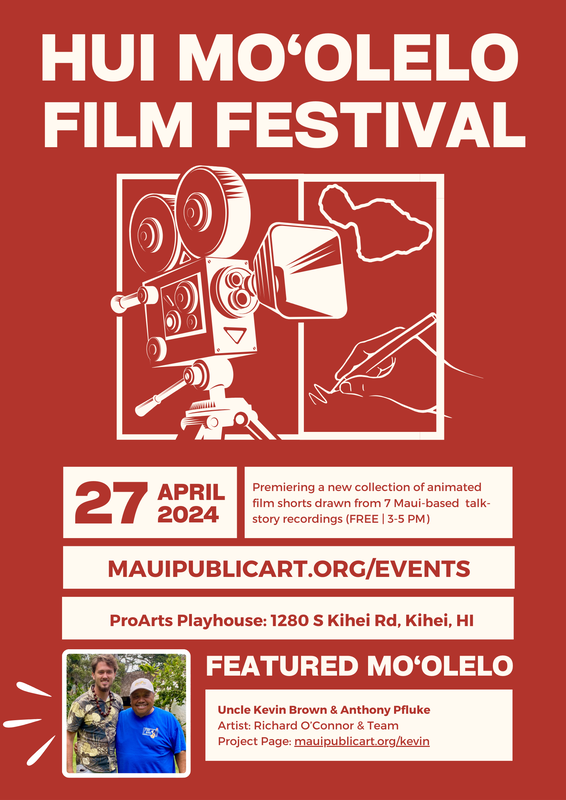
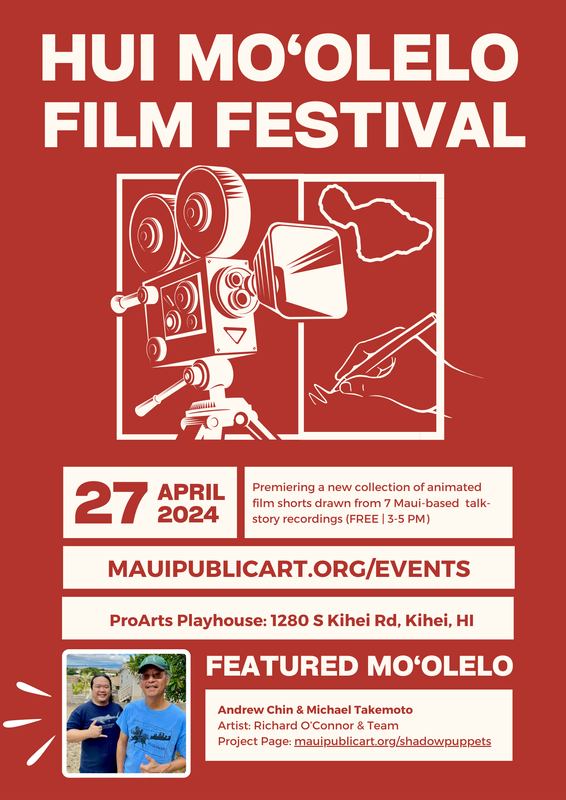
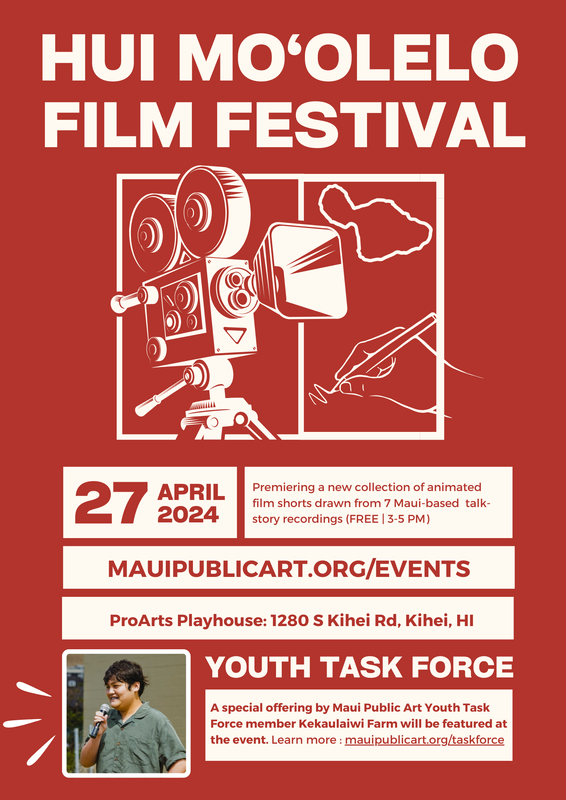
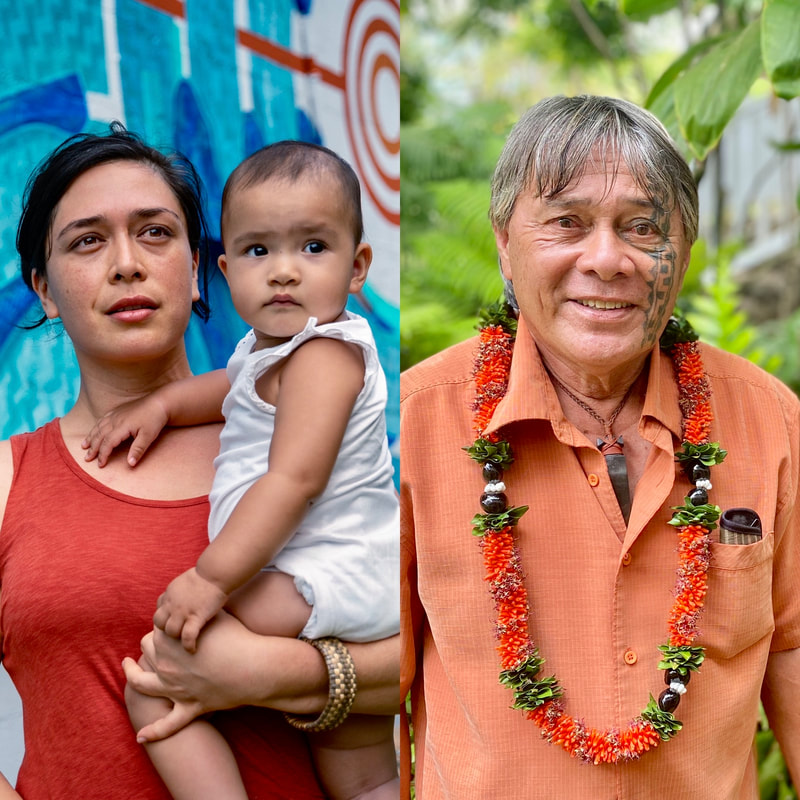
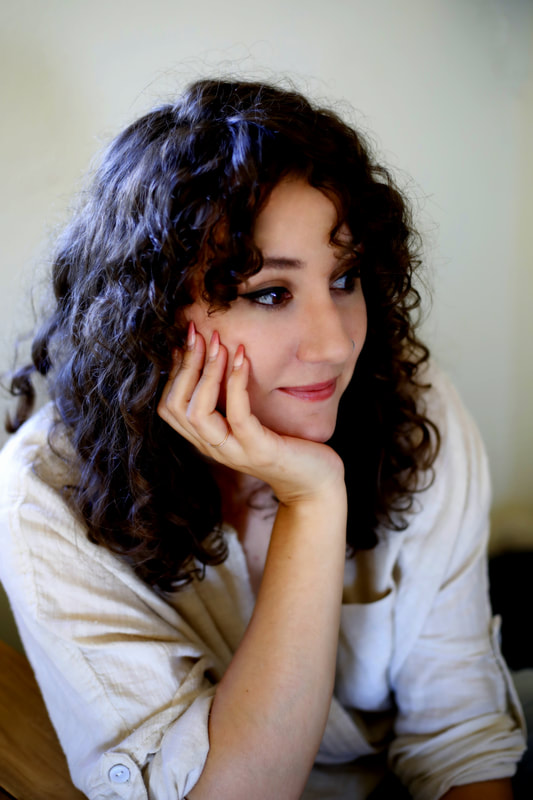
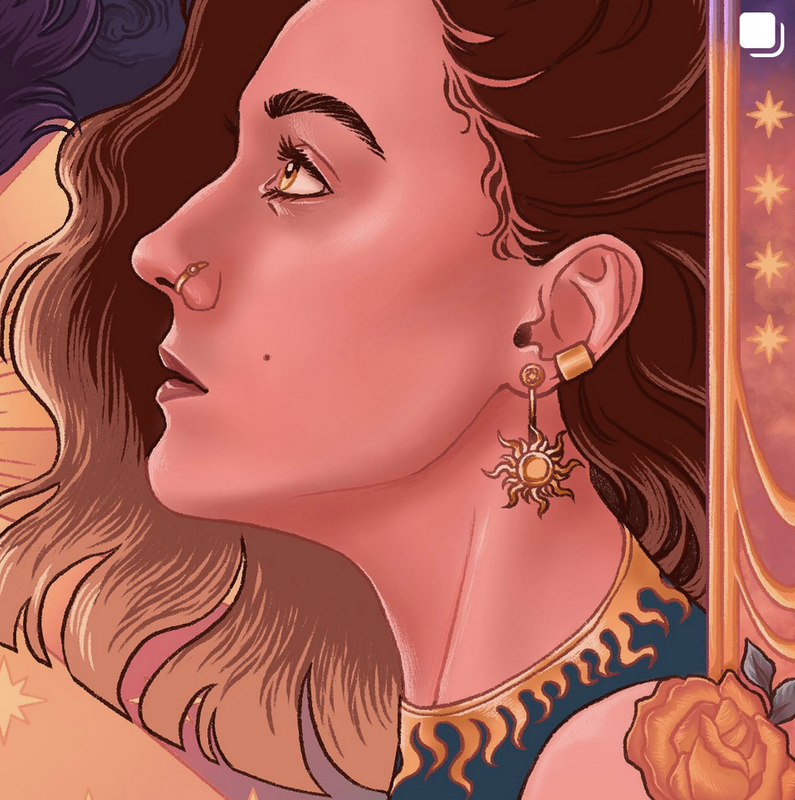
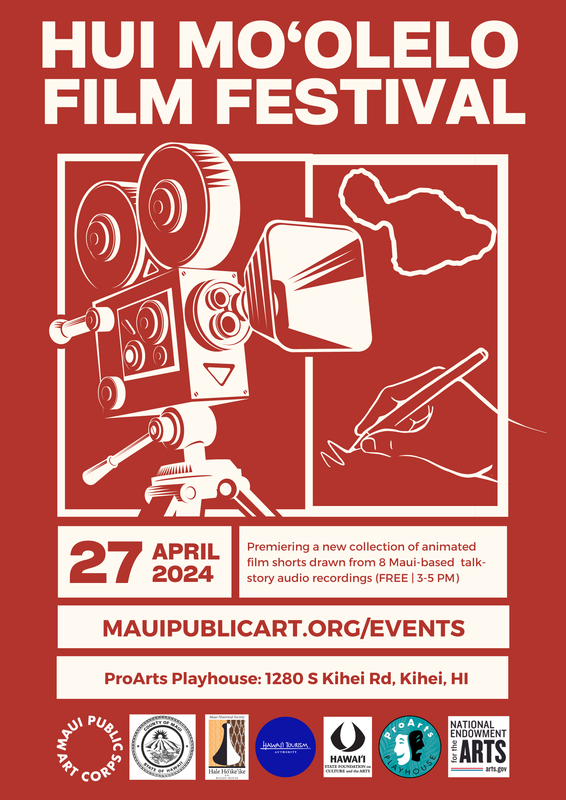
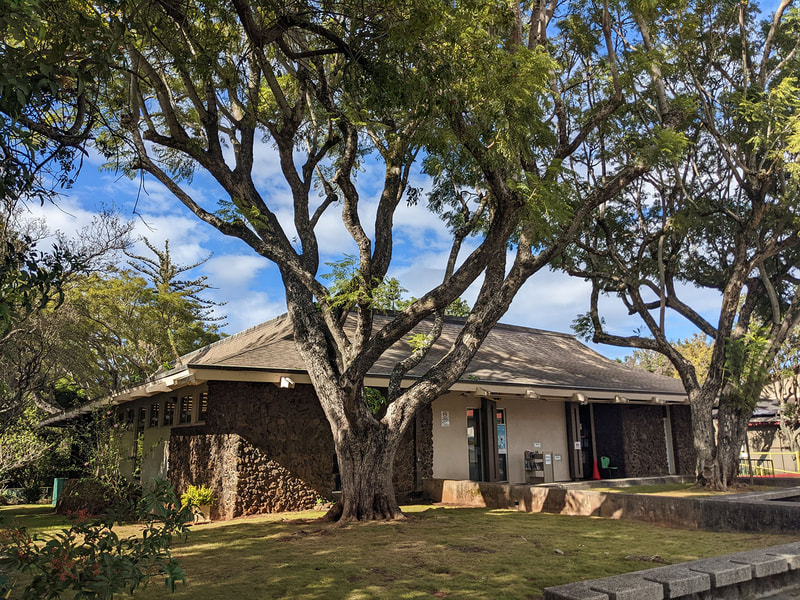
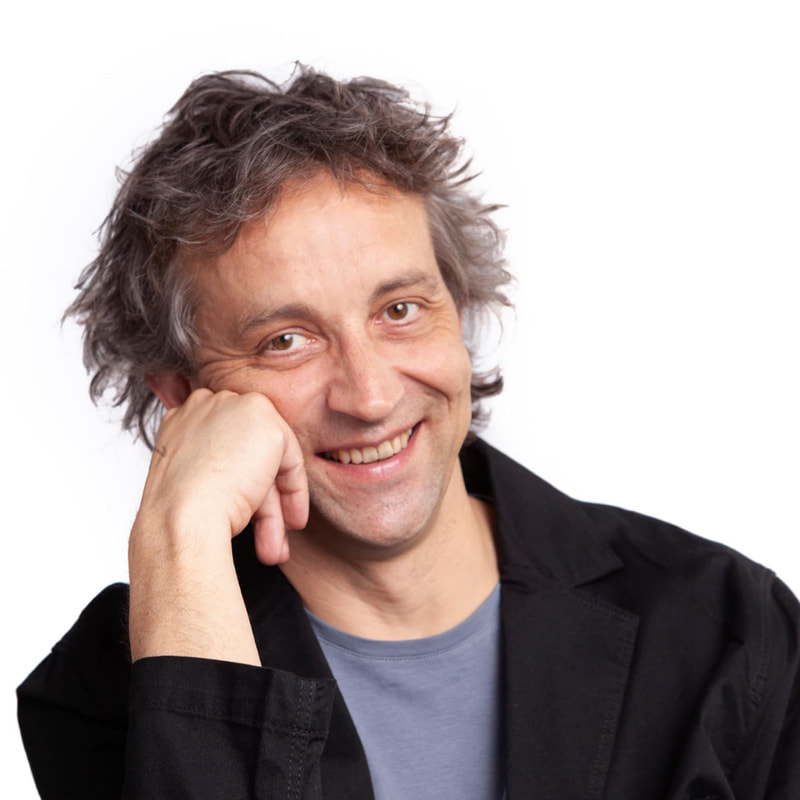
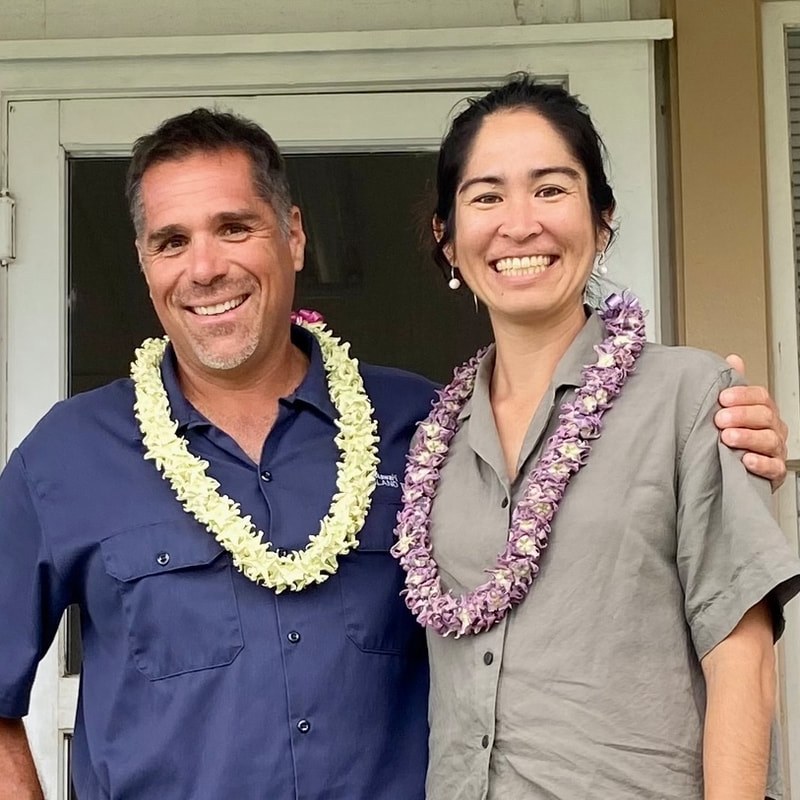
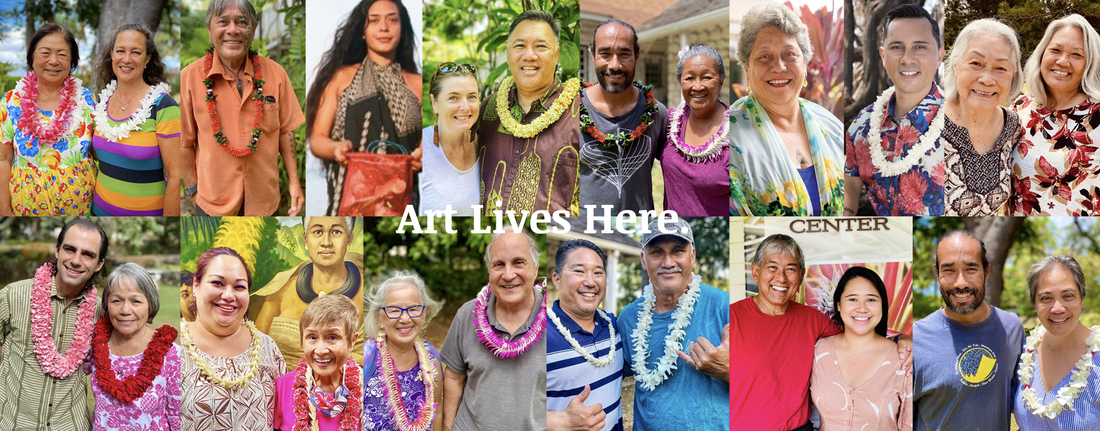
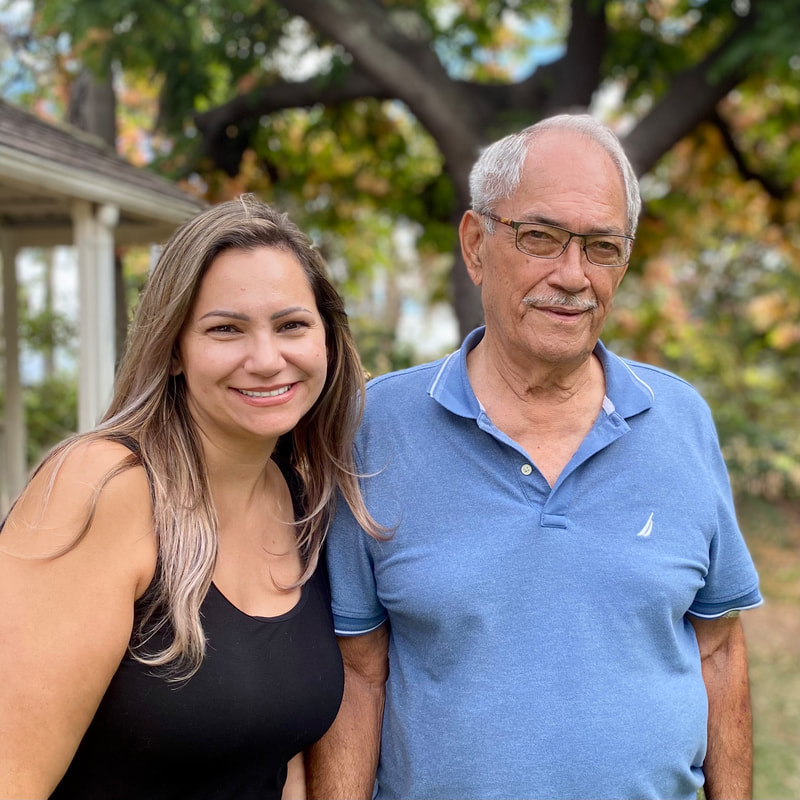
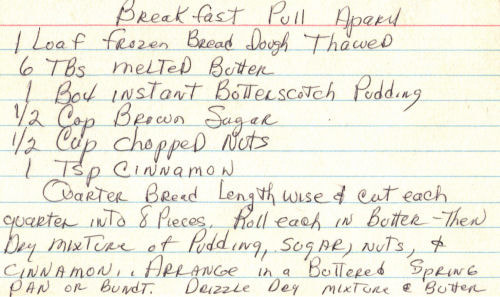
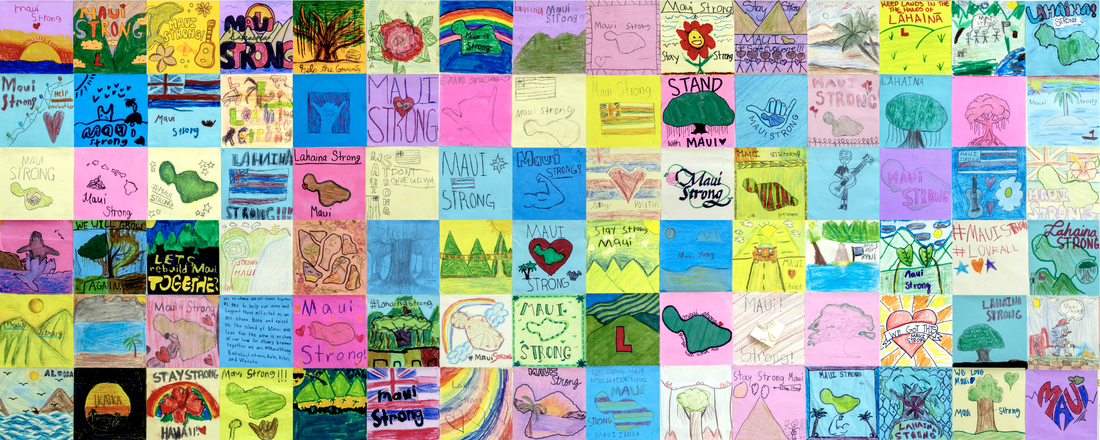
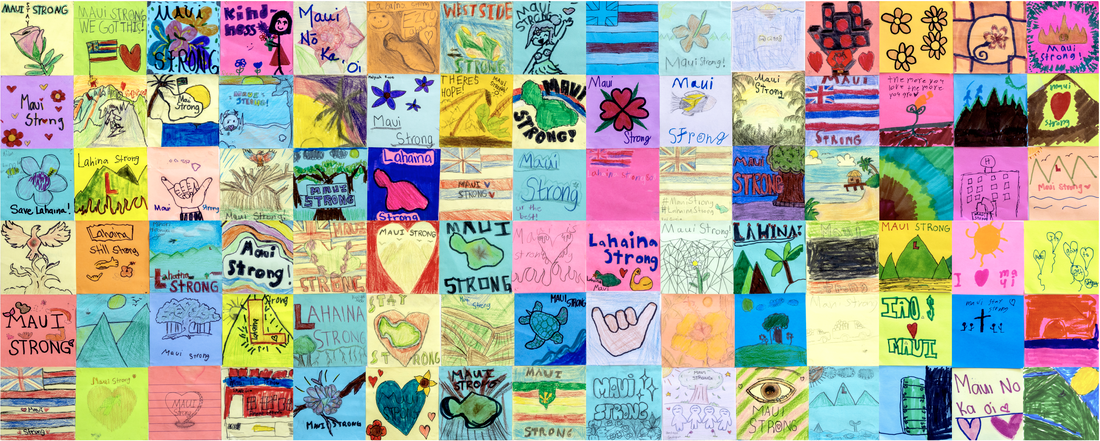
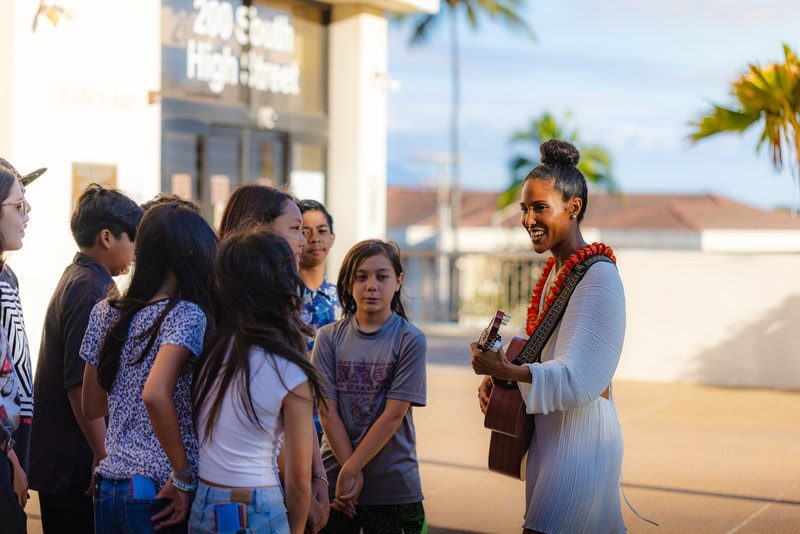
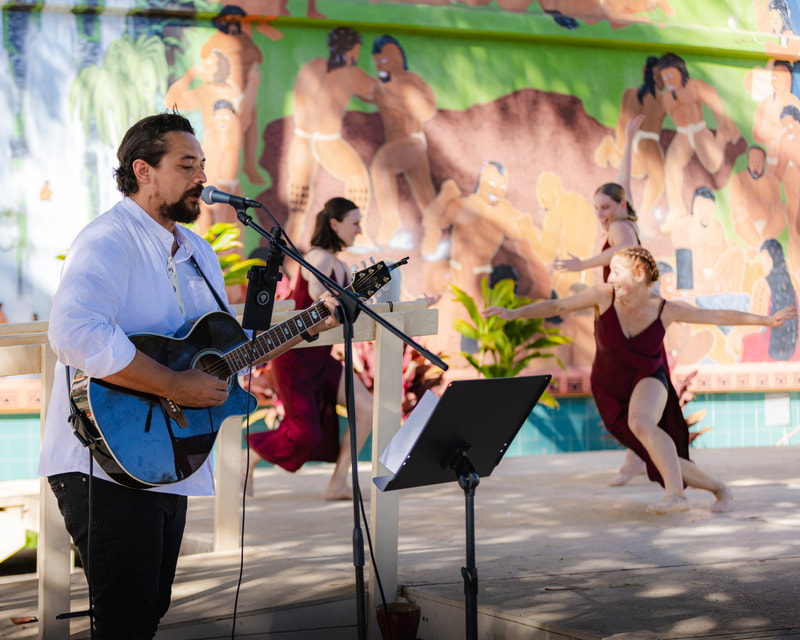



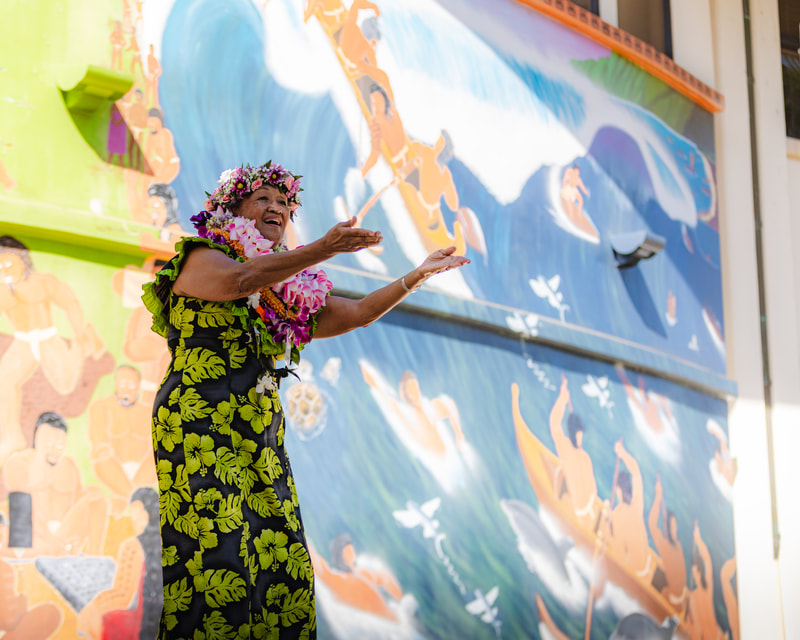

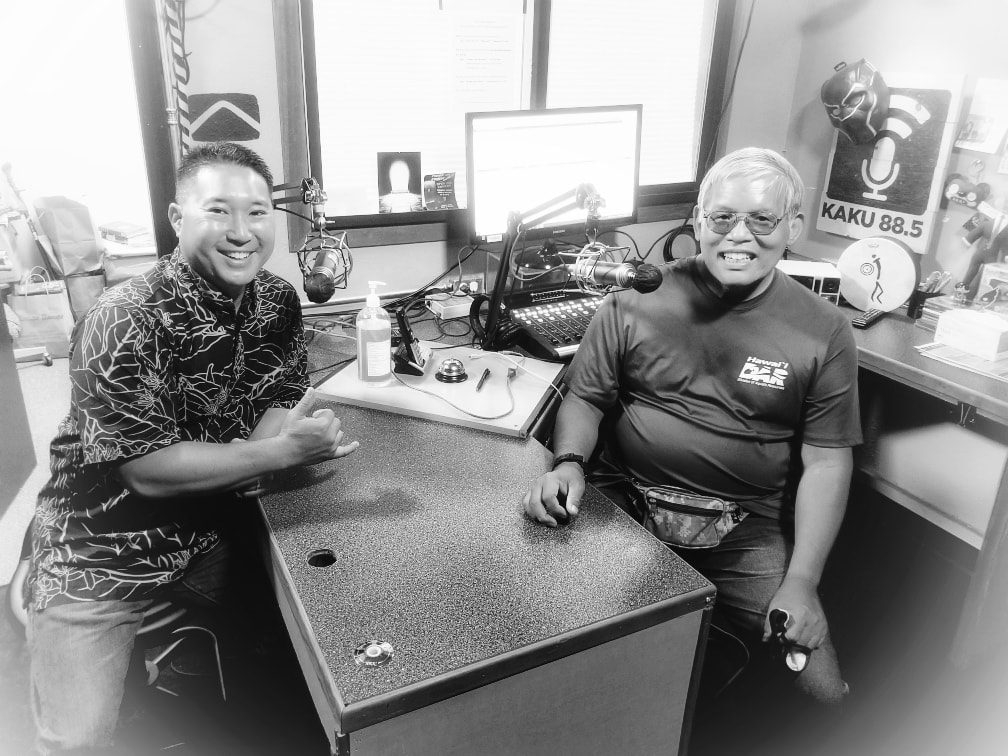

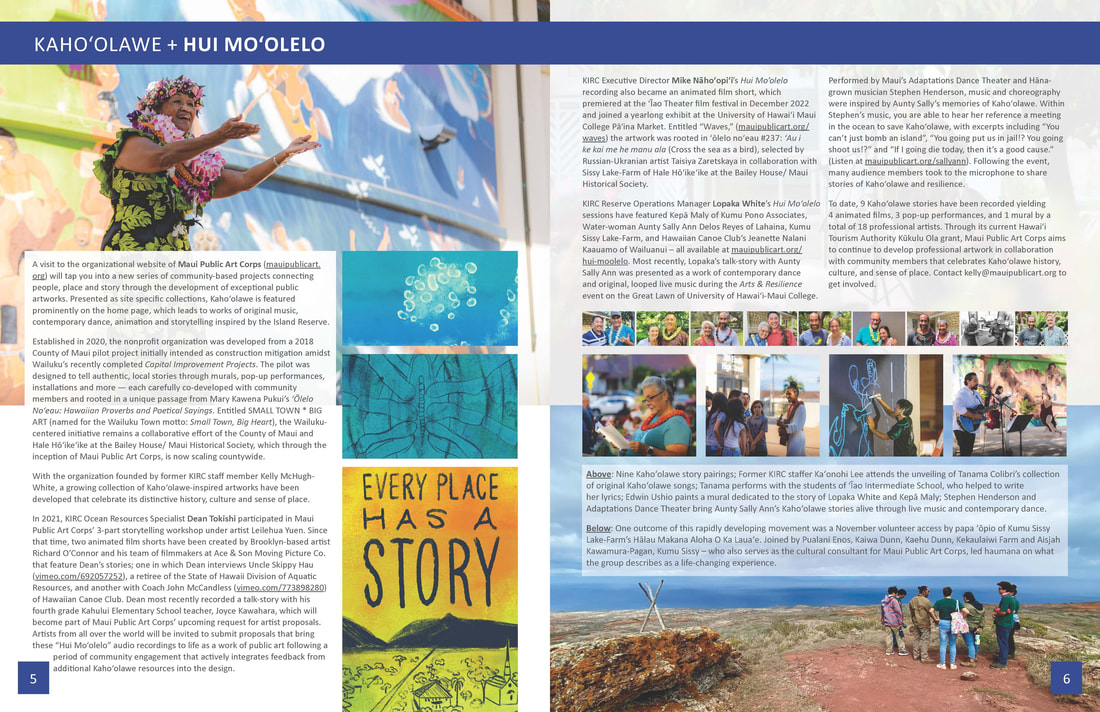
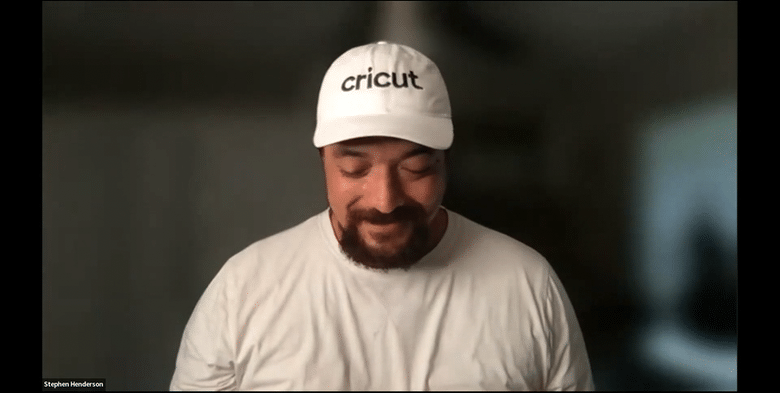

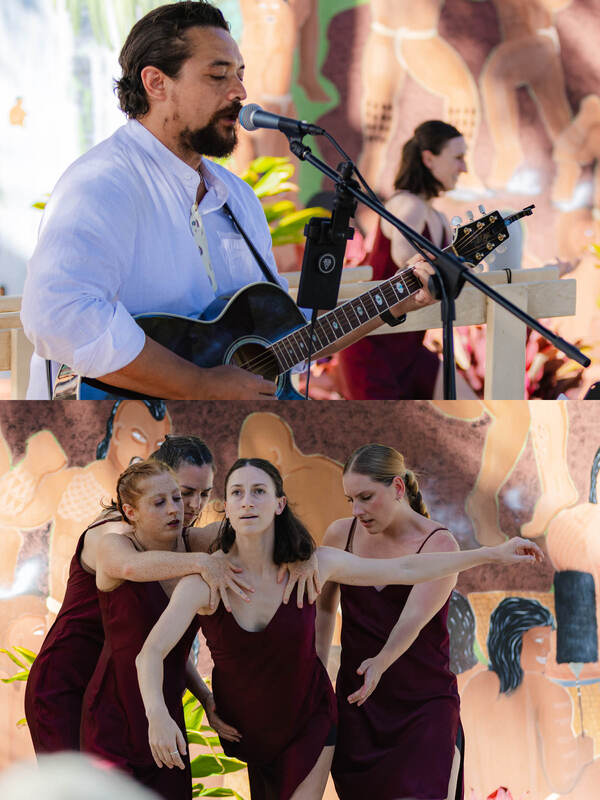
 RSS Feed
RSS Feed